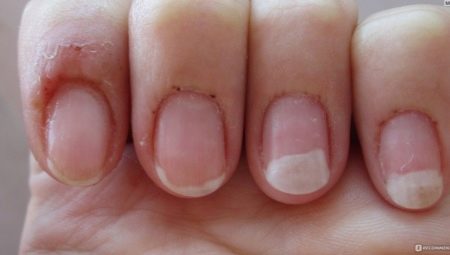Performing a bright and fashionable manicure coating of nails using a persistent polymer gel polish today has become one of the most popular services in modern beauty salons. The reason for this increased demand among women is simply explained - gel varnishes are one of the most resistant and practical quick-drying coatings for the nail plate. After applying to the nails, gel polish retains shine, color brightness and its durability for at least 3-4 weeks. Despite the many positive factors of gel polish, this product is not suitable for everyone to perform manicure. Sometimes it can happen that after applying a stable polymer coating an allergic reaction occurs, and its causes and symptoms are very diverse.
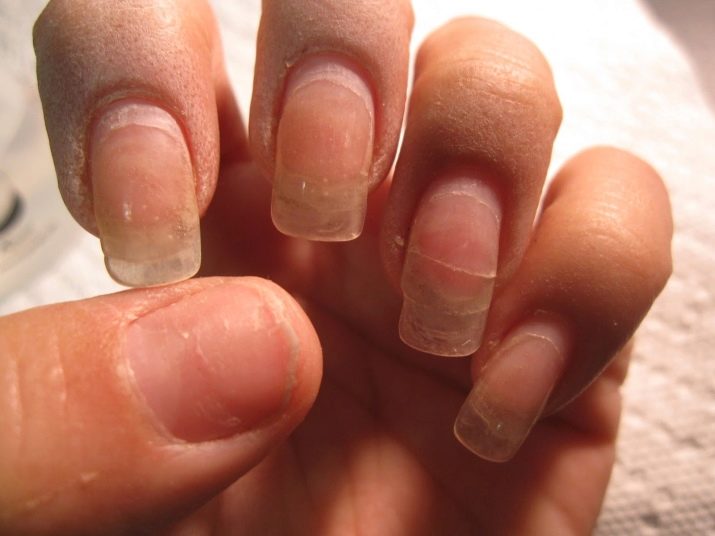
Causes
The technology of applying gel polish on the nail surface depends on what components the product itself consists of. Distinguish one-component, two-component and three-component gel varnishes. In general, the entire procedure for applying gel polish is that the base coating is applied to the nail, then the color composition and the final layer, which fixes all the previous ones, combining them into one whole.


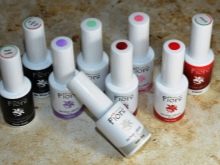
The final top may contain a sticky layer that requires removal, but there are varnishes where it is missing.
If we consider the compositions of gel varnishes from the point of view of their allergenicity, then it is believed that the more different components are present in the composition of the product, the higher the likelihood of an allergy to one or more of these ingredients. When performing a manicure using polymers, you must understand that allergies can occur on any layer of gel polishmoreover, the effect of the components can be not only on the nail plate, but also on the skin.
Gel polish consists of a film former, photoinitiator, pigments, diluents and other additional ingredients, such as diacetone alcohol, butyl acetate, phosphoric acid, phenyl ketone, toluene, formaldehyde resins, polymers, nitrocellulose and others. Each of the listed ingredients has a chemical origin and is a fairly strong potential allergen.
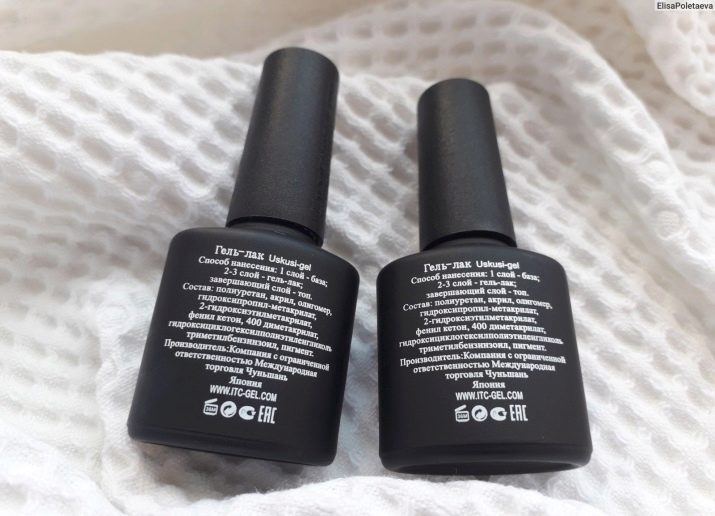
It is almost impossible to identify the allergen to which your body will react in advance, regrettably, but everything is determined, as a rule, by trial and error.
Sometimes an allergic reaction of the body can manifest itself not on the components of gel polish, but on a violation of its storage or use. For example, if the material is exposed to the ultraviolet rays of the sun, then under their action the polymers included in the product will begin the polymerization process, which should not occur in a bottle with varnish, but when the product is applied to the nail plate.

Of course, it is no longer possible to use such a product, since it is not known how it will behave when applied to nails.
Often allergic irritation manifests itself if the polymer material flows from the nail plate to the skin of the nail rollers, therefore, when applying any component of the gel product, extreme care and accuracy of movements are required.
In fact, the risk of developing an allergy to the use of gel polish is not so great and although it is present, an organism’s immune response to a quality product is very rare.
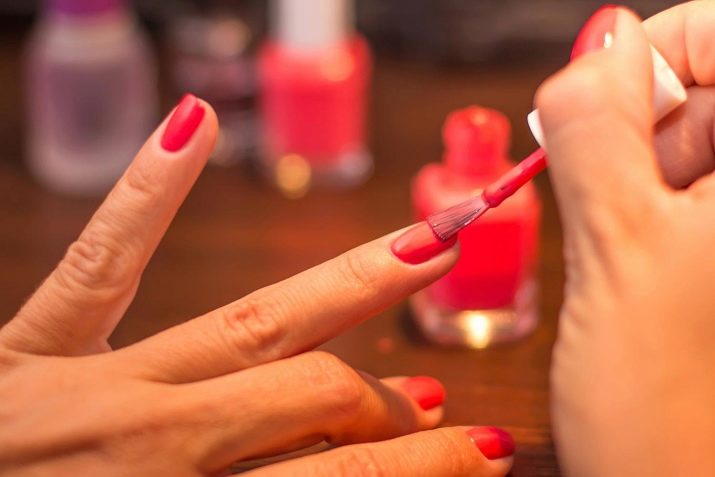
Symptoms
An allergic reaction is manifested, usually locally and its signs are reduced to the appearance of irritation on the skin. Such manifestations are called contact allergies, when fingers suffer when components that make up gel polish get on them. An allergic reaction looks like this: areas of redness with a small point rash appear on the skin, sometimes the rash happens in the form of blisters, inside of which there is a liquid. Such processes are usually accompanied by a strong feeling of itching or a burning sensation of the skin.
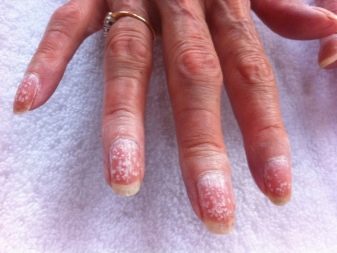

Sometimes the process is spilled in nature and from the fingers it rises up, while capturing the entire hand.
An allergic reaction of the body can also manifest itself as peeling of the skin, as well as exfoliation of the nail plate, up to the complete detachment of the nail from the nail bed. In rare cases, an allergy to gel polish can provoke symptoms of bronchial asthma with a prolonged painful cough and difficulty exhaling. But such cases are extremely rare, although they should not be excluded from the list of possible.
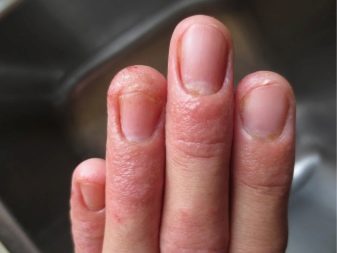
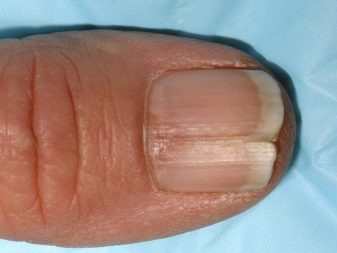
The basis of the manifestation of an allergic reaction is an individual feature of the body, which is intolerance to certain components of the product.
However, not only customers are exposed to allergies, on the nail plate of which they apply gel polish. Masters, daily carrying out one after another procedures for applying polymer compositions to the nails of their clients, are forced to inhale the vapors of chemicals and contact them indirectly. Failure to comply with safety precautions by masters and ignoring the use of personal protective equipment can lead to an allergic reaction in them even without using manicure with gel polish on their nails.
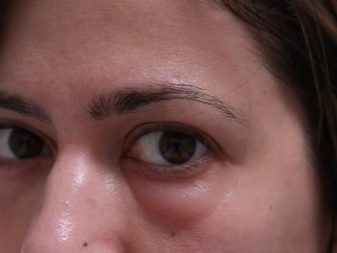

Inhalation of the vapor of the chemical components of gel polish leads to an allergic rhinitis, cough, swelling of the eyes and face, marked lacrimation.
Often there is repeated sneezing, nasal congestion, swelling of the lips and even the tongue, the occurrence of a feeling of soreness in the throat and difficulty breathing. Such symptoms can appear both in the master performing the manicure, and in his client. Doctors believe that the manifestation of respiratory symptoms of allergies is much worse than skin symptoms, since in case of respiratory failure there is a direct threat to human life.The most terrible in such a situation is Quincke's edema, developing rapidly and leading to suffocation in a matter of minutes - without the provision of comprehensive medical care, this condition most often ends fatally.
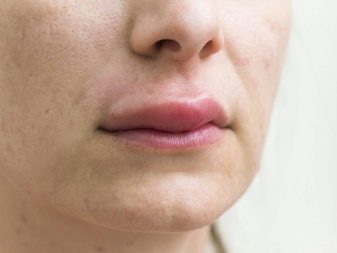
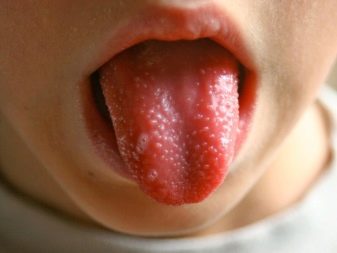
If you do not respond in time to the appearance of an allergic reaction of the body to the components of gel polish and do not eliminate the source of allergy, the situation may worsen, and the symptoms of the immune response will increase, leading to serious health consequences. Modern medicine already knows cases where when using allergenic gel polish and ignoring the symptoms of allergy, they began to appear not only on the hands, but throughout the body.

What gel polishes cause allergies?
Among manufacturers of gel polishes with a high degree of allergenicity, products of Chinese origin have gained notoriety. This is due to the fact that in the competition and the pursuit of the low cost of the finished product, manufacturers use low-quality and aggressive chemical components in gel polishes.

In addition to Chinese manufacturers, allergen gel varnishes are also available from manufacturers from other countries.
Based on practical observations, knowledgeable manicurists distinguish a group of varnishes that have the greatest likelihood of an allergic reaction of the body to their use:
- Chinese gel polishes BlueSky, Kiwi, Cristina, Canni Colors and other cheap products;
- Russian products of brands Severina, Formula Profi;
- Kodi Professional Ukrainian gel polishes manufactured in the USA;
- Russian product Masura Lady, used for medical manicure using Japanese technology.
It is worth noting that the occurrence of allergies to these products may not be common to everyone, and sometimes the cause of peeling and swelling of the skin was not an allergenic effect, but a chemical burn, which also occurs in the process of improper use of resistant polymer products.

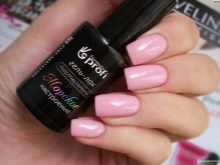
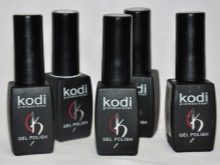
Among professional masters of manicure there is an opinion that most often troubles in the form of allergic manifestations happen with products whose cost is below 500-700 rubles.
Hypoallergenic brands of gel polishes are usually made from high quality components, and they are mandatory to be tested for hypoallergenicity before being put on sale. Conscientious manufacturers of gel polishes always publish the full composition of the components of their productwhile the creators of cheap gel analogues try to hide the composition of the decorative polymer coating. Varnishes with a high degree of allergenicity, as a rule, do not have the lot number assigned to the product in its manufacture. In addition, low-quality products have a pronounced sharp chemical smell.
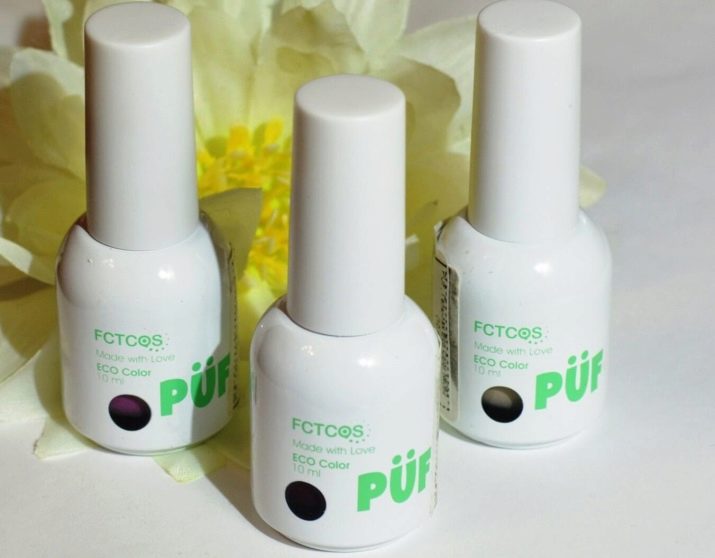
What and how to be treated?
The allergic manifestation that appears when using gel polish is similar in symptoms to fungal skin diseases or diseases of the epidermis of a different genesis. In order to get rid of allergic symptoms, it is necessary to determine the cause of their appearance using diagnostic tests. If symptoms of contact allergies appear immediately after performing a manicure using gel polish, you can only deal with them by eliminating the source of the allergy. Therefore, first of all, you will need to remove the gel manicure from the nails, and after that immediately seek medical help in order to correctly diagnose the disease and cure it.
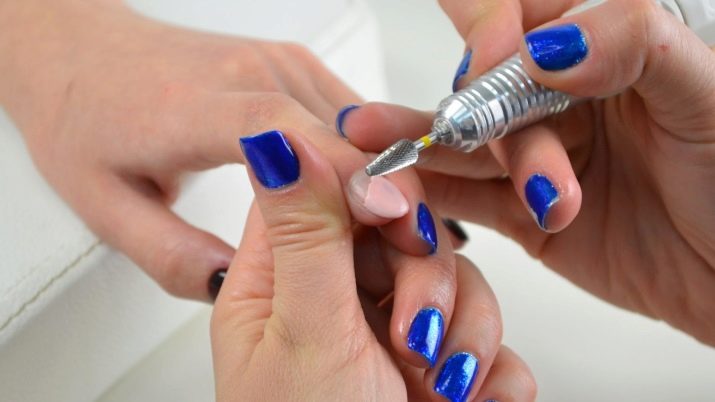
After allergy tests, you will be prescribed appropriate treatment. Typically, therapy consists of the use of certain types of drugs.
- Antihistamines. Their purpose allows you to eliminate the development of an autoimmune reaction of the body to an allergen, while reducing tissue swelling and a burning sensation.Antihistamine medications include loratadine, clarithin, diazolin, suprastin, peritol, traxil and other similar drugs. In order to successfully treat allergies, one of these drugs should be taken as directed by a doctor for at least 10 days. But do not self-medicate, but it is better to consult a doctor.
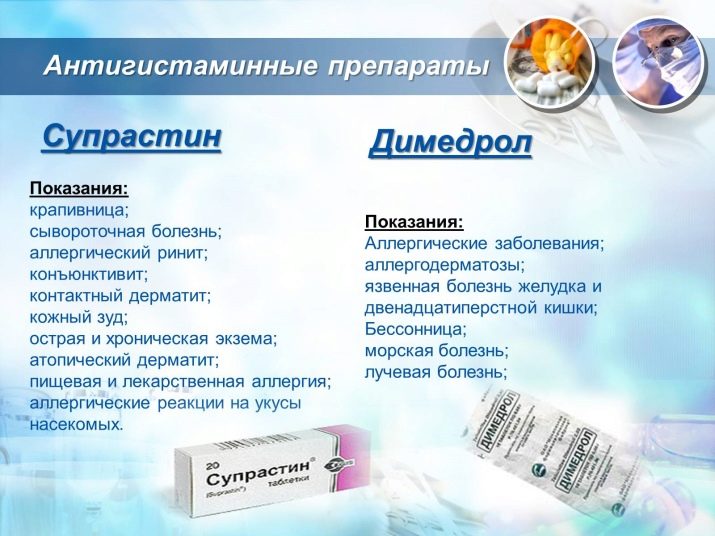
- Outdoor facilities. In order to alleviate the condition of contact allergies, it is necessary to do topical drug treatment of affected skin areas. For these purposes, it is effective to use an ointment, gel or cream with corticosteroid hormones. Reviews of doctors and patients indicate that the combination of antihistamines and external ointments gives a quick and lasting therapeutic effect. Regularly smear the affected skin with drugs such as hydrocortisone, celestoderm, lorindens, eloc, mesoderm, flucinar, advantan and other analogues. There are ointments that need to be used to provide emergency care to relieve allergy symptoms. Among such funds, phenistil, nezulin are most common.

- Vitamin preparations. They are prescribed in combination with antihistamines and external ointments. The use of vitamins helps to strengthen the immune system and accelerate the restoration of the skin after allergic manifestations.
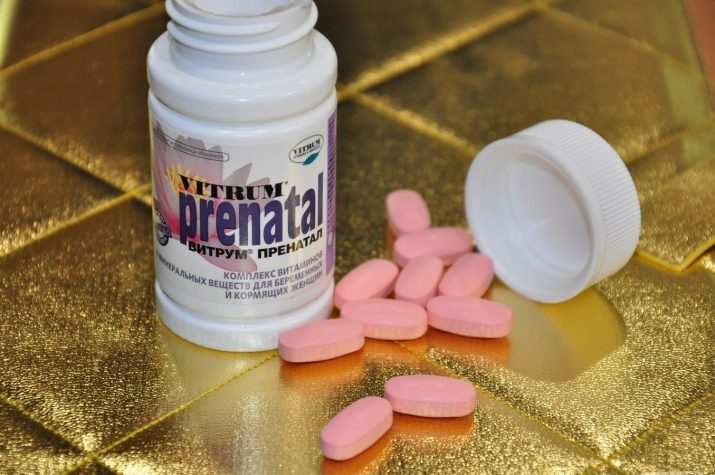
During the course of treatment, an allergist can prescribe you a hypoallergenic diet and recommend avoiding contact with water for a while.
After recovery, do not use persistent polymer gel polishes again, since such a manicure can cause a repeated allergic reaction of the body, but is much stronger in its development than its previous manifestations. Experts advise not to use even regular nail polish for some time. This is necessary so that your nails and skin have the opportunity to fully restore and consolidate the healing effect.
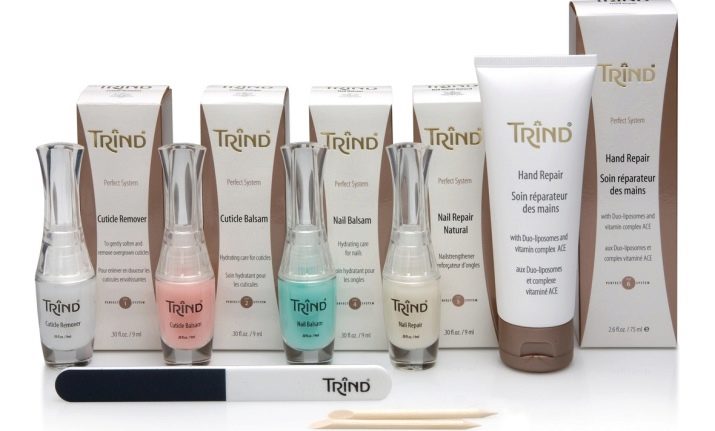
How to avoid an allergic reaction?
The possibility of an allergy to gel polish should never be overlooked and all necessary measures should be taken to prevent it. To do this, you must adhere to some rules:
- you need to buy gel polish only from trusted suppliers, fearing fakes, and choose well-known high-quality hypoallergenic brands from bona fide manufacturers;
- the application of polymeric materials must be carried out very carefully, avoiding the ingress of chemical products on the skin, while it is important not to disturb or change the process technology at its discretion;
- Before using gel polish, try to check not only its composition, but also the shelf life of the product;
- if you do not have the skills to use gel polish on your own, then try the procedure with a professional who has a certificate for working with similar products;
- It is noted that with nervous excitement, allergic reactions to gel varnishes occur much more often, therefore, being in this condition, refuse to perform the procedure, and if this is not possible, it is most advisable to replace the gel polish with a regular manicure varnish.
- in order to exclude allergies and chemical burns, when applying gel polish, it is necessary to follow all the stages of applying the product components in turn and not affect the skin.

This is facilitated by the proper preparation of the workplace, where there should be cleanliness and the absence of foreign objects.
In the best case, work with gel varnishes should be carried out at a table over which an exhaust air system is equipped - in this way both the master and his client will be protected from chemical vapors. If an allergic reaction begins to develop suddenly, you should always have first aid equipment ready before the doctors arrive.
Hypoallergenic drugs
In order to reduce the risk of an allergic reaction to the use of gel polish for nails, it is best to choose those materials that contain a minimal amount of aggressive chemical components. An alternative in this case is given to hypoallergenic products.
The list of hypoallergenic drugs may be as follows:
- original products of the American brand CND premium;
- American brand GelColor brand OPI Iceland;
- German brand Grattol of the middle price category;
- line of gel varnishes Luxio gel of the Canadian company Akzentz;
- gel varnishes from the "Organic" series produced by the Russian company "Option";
- Marble cashmere gel line of the Chinese brand UNO;
- American gel polishes from Professional Nail Boutique.
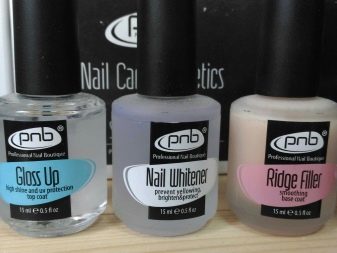
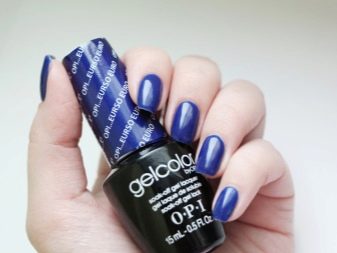
The listed products are well established in the market for the provision of manicure services using gel varnishes.
It is difficult to assert that these varnishes will be an absolute guarantee against the occurrence of an allergic reaction in you, since each human body is unique and individual. However, the base and top of these manufacturers has a minimal set of aggressive components, while maintaining high stability of the manicure coating of nails.
If you have an individual intolerance to ultraviolet rays of a lamp for drying gel polish, then an alternative can also be found in this case. There are products that can polymerize without ultraviolet:
- a line of gel polishes from the American company CND, a pioneer in the creation of such products;
- gel polish system from the French company Sophin for professional manicure.
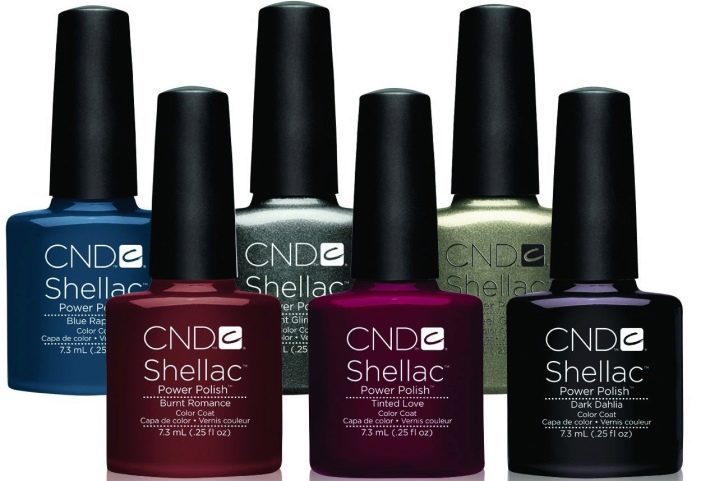
The composition of such varnishes and products for the topcoat includes a special oligomer; in addition to it, the top contains a photoinitiator that binds the coating layers.
Thanks to a special formula, the polymerization processes take place independently and do not need to be activated by the ultraviolet spectrum of the rays. However, according to user reviews, the strength of such varnishes is lower than that of traditional analogues hardening with the use of a lamp. Such a varnish dries from 30 to 60 minutes, and its resistance is stated by manufacturers up to 14 days, but in fact, after 3-5 days on the manicure you can see small chips. A big plus of such gel polishes is that to remove the decorative coating does not require prolonged soaking of nails in acetone or sawing off the varnish from the nail plate - this gel polish can be removed as usual manicure.

Summarizing the consideration of allergic reactions to gel polish, it should be noted that the use of such products is becoming more common, despite any risks. The fashion for resistant decorative coatings of nails is relevant due to the convenience and practicality of using resistant polymer materials. Having revealed an allergic reaction of the body to gel polish, you should not come to the idea that well-groomed nails are now inaccessible to you - after all, there is also a usual manicure varnish that can be applied at least every day, choosing a color palette for your mood. Nevertheless, science does not stand still, and gel polish is one of the brightest breakthroughs in the fashion industry, which many of us will enjoy using.
How to get rid of allergies to gel polish, see below.
